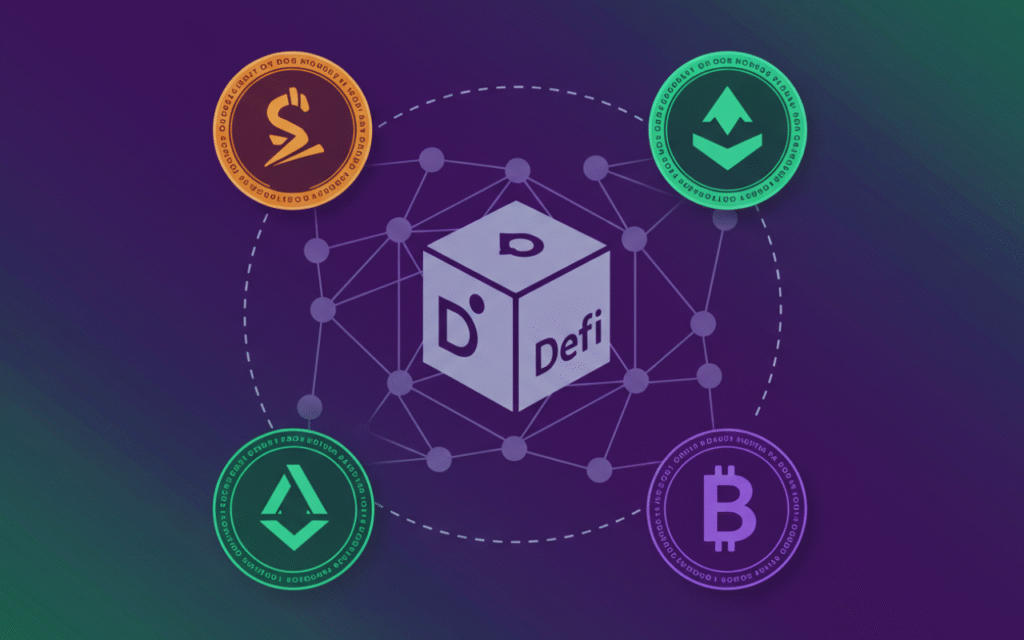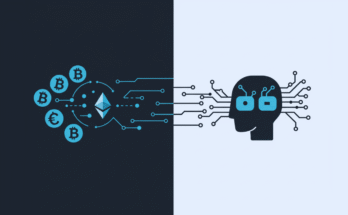Bitcoin has set the bar high, inspiring an impressive array of cryptocurrencies that have taken its lead and evolved further. While not all have found mainstream popularity, many have proven their worth within DeFi applications.
DeFi tools such as Uniswap allow users to trade cryptocurrencies directly from wallets, reducing costs and cutting out middlemen while increasing liquidity. These systems also serve as a source for trading opportunities.

1. Tether
Tether is an alternative stablecoin that experiences much lower price volatility than the overall crypto market, making it an appealing investment choice in times of extreme market instability. DeFi cryptocurrencies provide an interface that automates transactions between users. Through software, DeFi automatically calculates margins, interest rates and collateral ratios.
DeFi applications are built atop well-established blockchain networks like Ethereum, Solana and Polkadot to avoid starting from scratch and reduce development costs while helping dApps expand more rapidly and innovate quicker.
2. Avalanche
DeFi is increasingly turning to Avalanche for their blockchain needs, while Avalanche is becoming known for being a versatile layer 1 blockchain with sub-second finality, high throughput and security without compromising decentralization. Avalanche has already been put to use in real world applications such as digitizing car titles and giving sports fans digital collectibles.
Staking mechanism on Avalanche promotes community involvement while keeping its network secure, offering rewards to those contributing to keeping it decentralized by lowering transaction fees. Scalability and interoperability will further fuel its growth as more projects build dApps on its platform, creating demand for its token.
3. Toncoin
DeFi applications are typically built upon blockchain networks which provide the security and communities necessary for success. Often powered by native crypto tokens that encourage users to participate in running the networks.
Toncoin is the native cryptocurrency of The Open Network (TON). It serves payment solutions, dApps and other apps within its ecosystem as well as network operations and transactions. The TON network uses shard chains, which divide up Workchain into smaller pieces called shards and function like individual mini-blockchains to process transactions and smart contracts more scalably than traditional blockchains.
4. IOTA
DeFi’s central element is blockchain, an electronic ledger for recording digital assets. Blockchains such as Ethereum and Binance Smart Chain allow users to participate in DeFi through cryptocurrency payments such as Ether or Binance Smart Chain tokens (BNB).
These blockchain oracle networks connect on-chain and off-chain environments through smart contracts that execute transactions based on external data, providing secure transactions on-chain. Chainlink serves as a decentralized middleware to keep systems safe. DeFi fans hold that an internet-native financial system will develop, without needing banks or stock exchanges as intermediaries to manage money. Instead, software will create trust among parties involved.
5. Litecoin
Litecoin has long been seen as the “Silver to Bitcoin’s gold“, being released in 2011 to complement its older brother. It offers lower transaction fees, faster processing times, and unique privacy features that set itself apart. Furthermore, Litecoin supports cross-chain interoperability with other blockchain ecosystems such as Ethereum – making it suitable for DeFi and Web3 applications.
Litecoin, a modification of Bitcoin codebase, features a maximum supply of 84 million coins with rewards being cut in half every 840,000 blocks to facilitate mining on its blockchain and faster processing transactions.
6. Dash
DeFi is an innovative financial ecosystem that enables users to connect and participate in lending, borrowing, trading and exchanging, earning interest and dividends as well as lending in general. Built on Ethereum blockchain networks as well as digital assets like Bitcoin or ether and stablecoins.
These blockchains facilitate fast, low-cost transactions that are open and transparent, which make them ideal for DeFi. Long-term holders should opt for layer-1 blockchains that support smart contracts and dApps such as Ethereum or Cardano as these projects have demonstrated their scalability, security, and longevity over time.
7. Monero
Decentralized Finance, or DeFi, uses blockchain technology to make loans, trades, and insurance faster, cheaper, and more democratized by eliminating middlemen such as banks and financial service companies. Many DeFi applications utilize smart contracts, which automate the process of verifying transactions and decrease fraud risk while making them more secure.
DeFi lending protocols like DeFi allow users to borrow cryptocurrency without going through credit checks, while some also feature rate-switching capabilities so borrowers can earn interest on their deposits. Meanwhile, Augur allows people to buy and sell “shares” representing odds for market events.
8. Zcash
Zcash, as a fork of Bitcoin, provides transactions geared toward protecting privacy using its own blockchain technology. Zk-SNARKs serve as a privacy layer and can encrypt transaction details while being audited by third parties.
Security protocol design was spearheaded by an impressive group of academic developers from Johns Hopkins University and Tel Aviv University, including Matthew Green from Johns Hopkins and Eli Ben-Sasson from Tel Aviv respectively. Additionally, the for-profit company behind this open source software also holds stakes in its cryptocurrency which it divides amongst itself, private investors, and a non-profit foundation.
Ethereum has taken notice of the cryptography behind zk-SNARKs, planning to implement it as part of their Metropolis upgrade and make it easier for developers to create privacy enhanced smart contracts and DeFi applications on its blockchain.
9. ICON
Experienced cryptocurrency investors tend to switch up their altcoin categories frequently in order to stay abreast of emerging tech trends. A portfolio might contain DeFi tokens for bets on reinventing finance, gaming tokens for metaverse gaming and layer-2s for blockchain scaling, among many others.
Investor sentiment and narrative changes often drive altcoin rallies. When markets experience positive developments, AI-focused altcoins outpace other categories like DeFi and gaming tokens in terms of performance. Meme coins powered by viral social media posts can also lead to price gains. While these coins operate nearer the forefront of AI and crypto technologies that could experience future breakthroughs, their riskier nature makes them harder to invest in than other categories.



